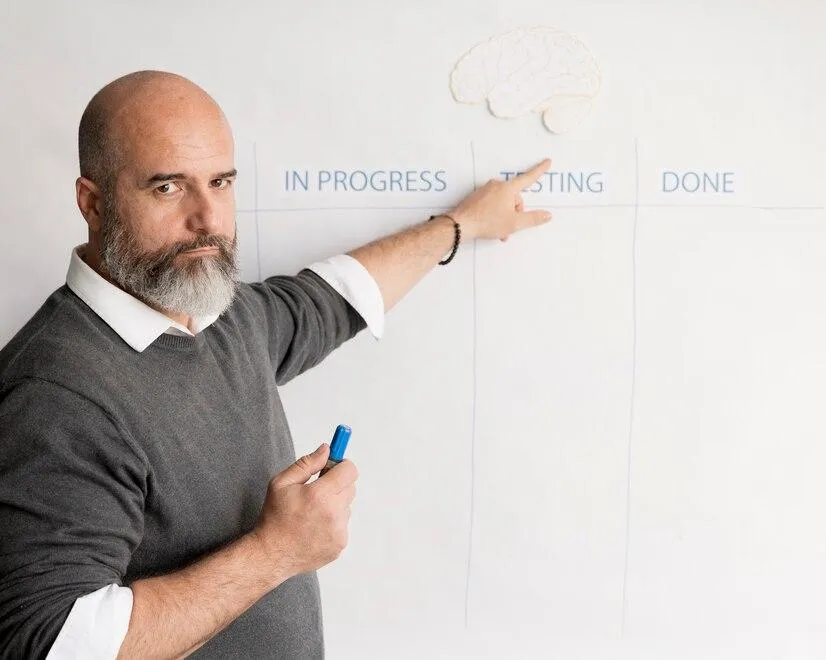Embarking on a career in Lean Six Sigma is akin to setting sail on a voyage of continuous improvement. From being a novice practitioner to eventually attaining the revered status of a guru, the journey is marked by learning, growth, and application.
In this blog, we'll delve into the nuances of advancing your career in Lean Six Sigma, from the initial steps as a practitioner to the pinnacle of expertise.
Key Milestones On The Path To Success In Lean Six Sigma
A Journey in Lean Six Sigma is akin to stepping onto a path of continuous improvement and professional growth. As practitioners navigate this dynamic field, they encounter key milestones that mark their progress and signify their advancement towards mastery.
1. Foundation Building:
At the outset of the Lean Six Sigma journey, practitioners focus on laying a solid foundation by mastering the fundamental principles and methodologies of the discipline.
This stage involves immersing oneself in the core concepts of Lean Six Sigma, including understanding the DMAIC framework (Define, Measure, Analyze, Improve, Control) and basic problem-solving techniques.
By acquiring these foundational skills, practitioners establish a solid groundwork upon which to build their expertise and navigate more complex challenges in the future.
2. Practical Application:
In the phase of practical application, Lean Six Sigma practitioners transition from theoretical understanding to hands-on experience by actively participating in improvement projects.
This stage is characterized by the application of Lean Six Sigma tools and methodologies to real-world scenarios, where practitioners work collaboratively with teams to identify opportunities for process improvement and implement effective solutions.
By engaging in practical projects, practitioners gain invaluable experience, refine their problem-solving skills, and develop a deeper understanding of how Lean Six Sigma principles can drive tangible results within their organizations.
3. Project Leadership:
As Lean Six Sigma practitioners progress in their careers, they embark on the stage of project leadership, where they take on pivotal roles in guiding improvement initiatives from inception to completion.
This phase requires practitioners to demonstrate strong leadership skills, including effective communication, stakeholder management, and team coordination. Project leaders are responsible for defining project objectives, allocating resources, and ensuring that the project progresses according to the DMAIC framework.
By assuming leadership roles, practitioners not only drive successful project outcomes but also cultivate a culture of accountability and collaboration within their teams, laying the groundwork for future leadership opportunities and organizational impact.
4. Advanced Skills Development:
In the realm of advanced skills development, Lean Six Sigma practitioners move beyond the basics to master sophisticated techniques and methodologies. This stage is characterized by a deep dive into statistical analysis, root cause analysis, and other advanced tools to tackle complex organizational challenges.
By honing these advanced skills, practitioners become adept at solving intricate problems and driving sustainable change within their organizations.
This stage of development propels practitioners towards greater expertise and leadership roles within the Lean Six Sigma community.
From Lean Six Sigma Novice To Guru
A journey in Lean Six Sigma is akin to setting foot on a path of perpetual learning and professional evolution. From the initial steps as a novice practitioner to the zenith of expertise as a revered guru, this transformative journey is marked by a series of nuanced stages.
1. Novice Stage:
The journey in Lean Six Sigma begins at the novice stage, where individuals are introduced to the foundational principles and methodologies of the discipline. This stage is characterized by a thirst for knowledge and an eagerness to learn the basic concepts of Lean Six Sigma, including the DMAIC (Define, Measure, Analyze, Improve, Control) framework.
Novices typically undergo introductory training and certification programs to gain a fundamental understanding of Lean Six Sigma tools and techniques. They engage in entry-level improvement projects, where they apply theoretical concepts to real-world scenarios, laying the groundwork for their future development as practitioners in the field.
During the novice stage, individuals focus on building a solid foundation of knowledge and skills that will serve as the bedrock for their Lean Six Sigma journey.
2. Practitioner Stage:
As individuals progress beyond the novice stage, they enter the practitioner stage of their Lean Six Sigma journey. Here, they transition from theory to practice, applying their foundational knowledge to real-world improvement projects with greater confidence and proficiency.
This stage is characterized by hands-on experience, as practitioners utilize Lean Six Sigma tools and methodologies such as process mapping, root cause analysis, and statistical analysis to identify areas for improvement and implement solutions.
In the practitioner stage, individuals deepen their understanding of Lean Six Sigma principles through practical application and on-the-job learning.
3. Advanced Practitioner Stage:
In the advanced practitioner stage of the Lean Six Sigma journey, individuals ascend to a higher level of proficiency and leadership within the discipline. Building upon their foundation as practitioners, they delve deeper into advanced Lean Six Sigma methodologies and techniques, expanding their toolkit for process improvement.
Advanced practitioners take on more complex and strategic improvement projects, often with broader organizational impact, requiring a sophisticated understanding of Lean Six Sigma principles and a mastery of statistical analysis and root cause analysis techniques.
At this stage, advanced practitioners are recognized for their expertise and ability to drive significant improvements in organizational performance. They may assume leadership roles in leading cross-functional teams, guiding colleagues, and mentoring junior practitioners.
4. Expert Stage:
The expert stage marks a pivotal moment in the Lean Six Sigma journey, where individuals ascend to the highest levels of proficiency and leadership within the discipline. At this stage, experts are widely recognized as subject matter experts and thought leaders in Lean Six Sigma, possessing an unparalleled depth of knowledge and experience.
They have mastered advanced methodologies and techniques, including statistical analysis, design of experiments, and advanced problem-solving approaches, and demonstrate an exceptional ability to drive transformative change within organizations.
Expert practitioners often play key roles in driving cultural transformation, championing Lean Six Sigma principles, and shaping strategic decisions at the highest levels of the organization.
5. Guru Stage:
The pinnacle of the Lean Six Sigma journey is the guru stage, where individuals achieve the highest level of mastery and recognition in the discipline. Gurus are revered as true experts and visionaries, whose contributions have made a significant impact on the field of Lean Six Sigma.
At this stage, gurus possess an unparalleled depth of knowledge, experience, and insight, garnered through years of dedicated practice and continuous learning. Gurus are not only experts in Lean Six Sigma methodologies but also possess exceptional leadership, communication, and mentorship skills.
They serve as inspirational leaders, guiding organizations through large-scale transformations and driving innovation at every level.
Challenges And Triumphs
In the Lean Six Sigma journey, practitioners encounter a variety of challenges that test their skills, resilience, and determination. These challenges can range from organizational resistance to change, to navigating complex project dynamics, to sustaining improvements over the long term. Resistance to change within organizations can hinder progress and require practitioners to effectively communicate the benefits of Lean Six Sigma initiatives and overcome skepticism.
Additionally, managing project complexities such as conflicting priorities, resource constraints, and stakeholder expectations can pose significant challenges that demand creative problem-solving and collaboration. Furthermore, sustaining improvements beyond the initial implementation phase requires ongoing monitoring, reinforcement, and adaptation to changing circumstances.
Despite these challenges, practitioners experience triumphs as they overcome obstacles, drive meaningful change, and witness the tangible impact of their efforts on organizational performance and culture. By embracing challenges as opportunities for growth and innovation, practitioners demonstrate resilience and perseverance on their journey towards excellence in Lean Six Sigma.
Conclusion
Advancing your career in Lean Six Sigma is a rewarding journey marked by continuous learning and growth. From humble beginnings as a novice to reaching the pinnacle of expertise as a guru, the path is defined by dedication, experience, and a passion for improvement. By embracing challenges, seeking mentorship, and staying true to the principles of Lean Six Sigma, practitioners can elevate themselves to new heights of success and make a lasting impact in their organizations and industries.
FAQs
1. How long does it typically take to transition from a novice to a Lean Six Sigma guru?
The transition from novice to Lean Six Sigma guru typically takes several years of dedicated practice, continuous learning, and mastery of advanced concepts.
2. What are some common challenges faced by Lean Six Sigma practitioners?
Common challenges faced by Lean Six Sigma practitioners include resistance to change, navigating complex project dynamics, and sustaining improvements over the long term.
3. How important is mentorship in advancing one's career in Lean Six Sigma?
Mentorship is crucial in advancing one's career in Lean Six Sigma, providing guidance, support, and invaluable insights for accelerated growth and development.















